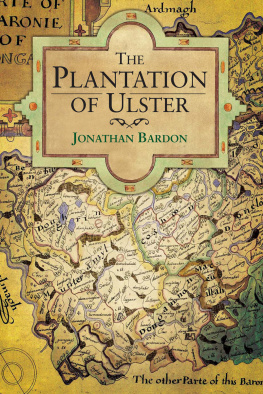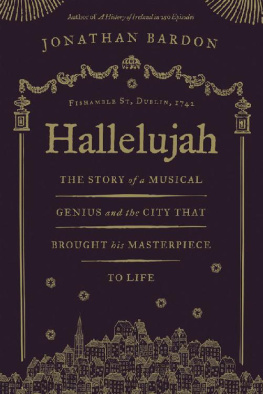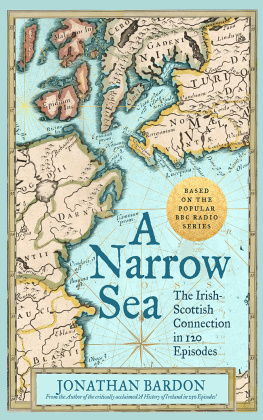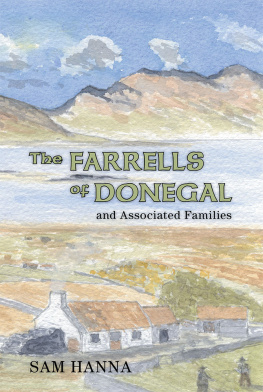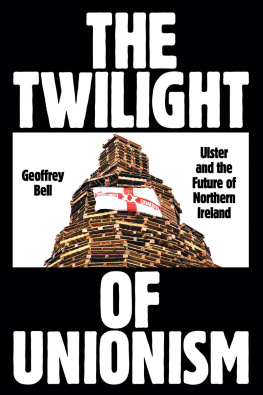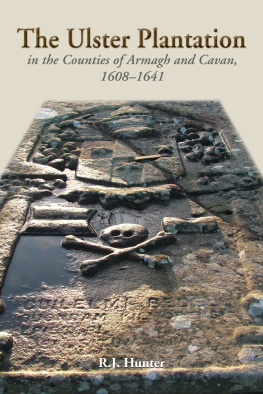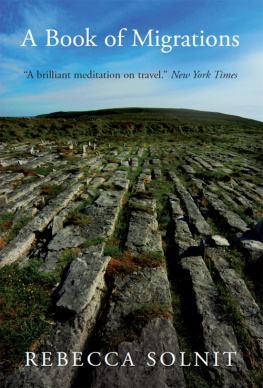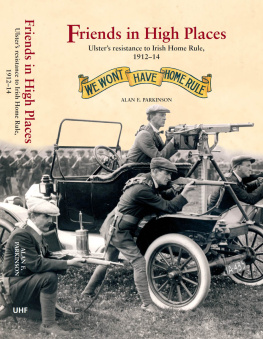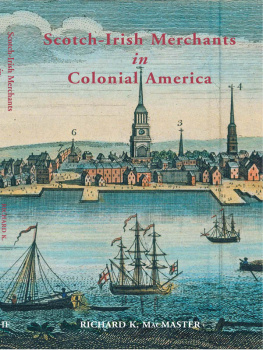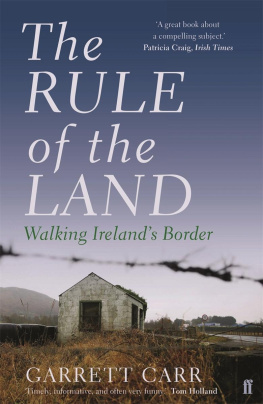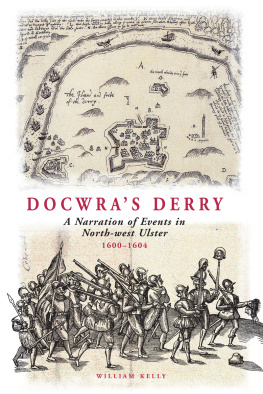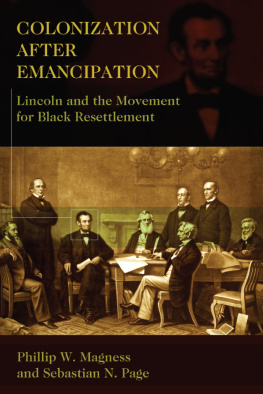PREFACE
In seeking the origins of Northern Irelands present discontents, historians and social scientists alike are again and again brought back to the British colonisation of Ulster in the seventeenth century. Attempting to find explanations has long been a concern of this author, who, in addition to teaching Irish history during a long career in further and higher education, has at various times been involved in curriculum programmes for schools (including Cultural Heritage and Education for Mutual Understanding), in writing radio and television programmes on Irish history, in the Community Relations Council and in the teaching of prisoners at the Maze Prison (where he taught exactly the same programme of Irish history to both loyalist and republican inmates).
Many widely held assumptions about the Plantation of Ulster can be shown to be flawed or, if not, in need of some refinement. Some argueas indeed did those who wrote pamphlets to encourage colonisationthat the land was utterly depopulated. It was not, even though the ruthless campaigning and destruction of food supplies as Crown forces closed in on Ulster in 16001603 had, by slaughter and famine, greatly reduced the numbers of native Irish there.
It is not true that those deserving Irish who received estates were deliberately assigned the poorest, most infertile land. James Is determination to remove all the natives from the estates of the leading planters came to nothing. Of course the Catholic Gaelic gentry were left with almost nothing in the province by the end of the century, but most of the Irishreduced in status, with burdensome rents and uncertain tenuresremained to farm the land. The slow process by which Catholic natives lost access to the choicest lands began only at the very end of the seventeenth century.
Many will be surprised that three amongst the most energetic planters were Catholics. Sir Randal MacDonnell, Earl of Antrim, brought large numbers of Presbyterian Lowlanders onto his land even before the official plantation had got under way; George Touchet, 18th Baron Audley, had seen to the erection of some of the plantations most impressive castles and fortificationsnotably Ballynahatty, Castlederg and Castle Curlewsup to his death in 1617; and, to the consternation of the government, Sir George Hamilton of Greenlaw, together with his relatives, as well as befriending Irish priests and Jesuits made his well-managed estate in the Strabane area a haven for Scottish Catholics seeking refuge from the oppressions of the Kirk.
Despite the confiscation of its lands and frequent persecutions, the Catholic Church in Ulster appears to have become stronger, better organised and more fervent during the period of plantation. To some extent this was even with the connivance of local planters; some London Companies infuriated the authorities by favouring Catholic priests on their lands, if only because they were model tenants who paid their rents promptly.
During the late sixteenth and early seventeenth centuries far more Scots leaving their homeland settled in Poland and Scandinavia than in Ulster. The great Scots migration to the north of Ireland began only in the 1650s and reached a peak in the 1690s. The assumption that religious and cultural differences kept British colonists and Gaelic Irish, and their descendants, as rigidly separate ethnic groups does not stand up to close scrutiny. There was far more intermingling than is generally acknowledged; otherwise British surnames, such as Hume, Adams and Sands, would not be found amongst Catholic nationalist activists, nor would native Irish ones, such as ONeill, McCusker and Maginnis, be found amongst Protestant unionist politicians.
Despite jaundiced observations in government reports commissioned by James I, the British colonisation of most of Ulster was largely achieved. Perhaps as many as 35,000 English and Scots had settled in the province by 1622; but, as this book is at pains to point out, the greatest influx occurred in the second half of the seventeenth century. Up to a quarter of a million British crossed over to Ireland between 1586 and 1700, most of them to Ulstera greater number than crossed the Atlantic from the Iberian Peninsula between 1500 and 1600.
That the Plantation of Ulster had a profound effect on the history of Ireland thereafter is universally acknowledged. It is less well known that it impinged significantly on developments on the other side of the Irish Sea. The City of London was persuaded by James I, very much against its inclinations, to become deeply involved in the plantation. Though the return on the great sums invested was meagre enough, the City was mercilessly hounded by Charles I for failing to adhere strictly to the conditions laid down. This was not the only reason for London coming down firmly on the side of Parliament, but it was a major one, ultimately ensuring the Royalists defeat in the Civil War.
In September 1718 a seventy-ton vessel,the Maccullum, set out from Derry Quay across the Atlantic. With the Rev. James Woodside at their head, about a hundred passengers disembarked at Boston. This could be regarded as the beginning of a great and sustained exodus from Ulster to North America. By 1775 at least 100,000 and perhaps as many as 200,000 had left Ulster for Colonial America, and the migration began again once King George III had given official recognition to the United States of America in 1783.
Even greater numbers emigrated in the nineteenth century. Americans referred to these immigrants as the Scotch-Irish. By this time most of these people had been in Ulster for several generations. The majority were Presbyterians, descended from Scots who had earlier colonised Ulster; however, there were nearly as many members of the Church of Ireland (Anglican settlers principally of English origin), drawn from a wider area, and considerable numbers of Catholics of native Irish stock, as indicated by surname evidence, many of whom became Protestants soon after landing. The striking fact is that very few Scots had yetat least in the eighteenth centuryemigrated directly from Scotland to Colonial America.
These Scotch-Irish and their descendants were to play a pivotal role in the shaping of the United States. They and their forebears had long experience of building fortifications in hostile territory, of felling timber and clearing the land for the plough and of engaging woodkerne, tories, raparees and other native Irish who resented their intrusion. They were to become energetic pioneers in the back country, pushing the frontiers of European settlement in North America inexorably westwards. Famously, they and their descendants provided the United States with many presidents, generals and entrepreneurs.

